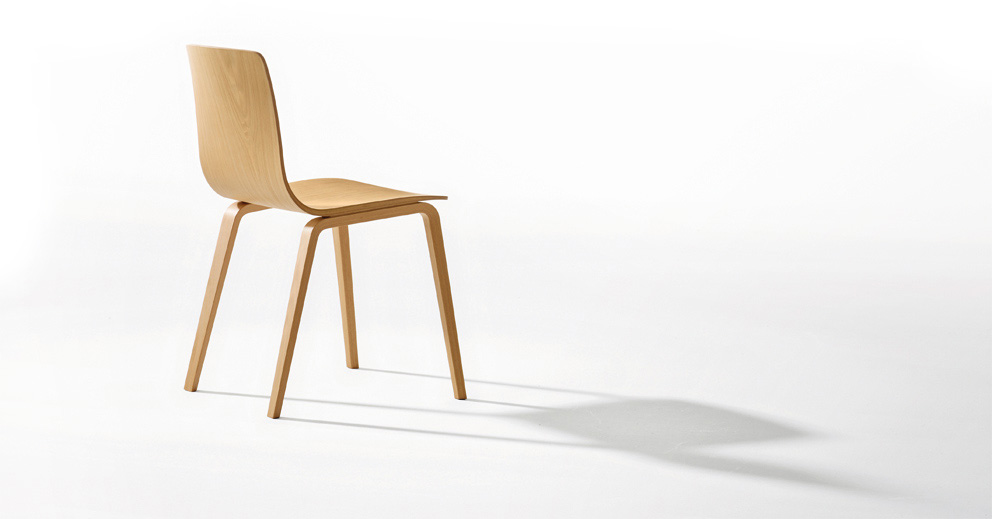
The Italian furniture company Arper will be presenting in Milan a collection of wooden chairs under the melodious name “Aava”. Designed by Finnish design agency Antti Kotilainen, not only do the chairs boast a beautiful, ergonomic form, the wood they are made of also gives them a pleasantly warm surface feel that should not be underestimated. The flowing, organic formal vocabulary seen in nature, the metamorphoses of plants and animals, the precise observation of one’s own environment and the emotions it evokes: this is what inspired designer Antti Kotilainen and his team to create the gently curved contours of “Aava”.
The ergonomic curves made of multi-layered veneer form a sleek silhouette and thus make a wonderful addition to almost any living or work space. On top the designers have created a seat shell component that works with a series of different bases – both technically and aesthetically.
And they haven’t forgotten the functional aspects either: The steel bases mean that “Aava” chairs can be easily stacked together.
Even though the chair’s design might not appear to be anything new, the collection’s reserved design is impressive. A range of versions made of different materials and colors, including a stool version, allow the user to adapt “Aava” to his individual needs.
Established in Helsinki in 1998, Antti Kotilainen has been working with various Scandinavian furniture manufacturers such as Asko, Lepo Product and Piiroinen since 1993. The designers of Antti Kotilainen attach particular importance to exploring new ways of processing wood.
The most important thing is that the products have a “human touch”, according them, a result of a combination of life experience, the desire to improve products and the conversion of one’s own feelings into a visual vocabulary.
The designers opted consciously for plywood when making the “Aava” collection, having already spent a great deal of time experimenting with the material. The possibilities for bending and processing this kind of wood allow them to shape it without losing the material’s positive properties.
Just as in music, it is often the soft, muted tones that touch people. An effect paralleled in the design world, where many display a more positive response to reserved, subdued design than to shrill, obtrusive shapes.
The product must not betray the time and effort that has gone into shaping it. Good design doesn’t shout, but rather convinces us with subtle arguments. With “Aava” it has certainly succeeded. (lb)



